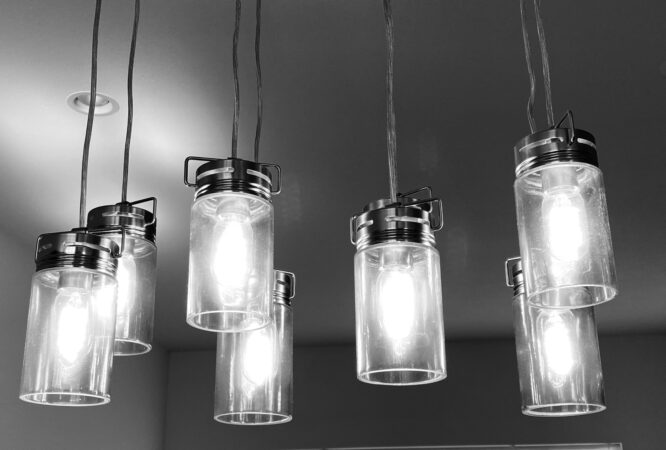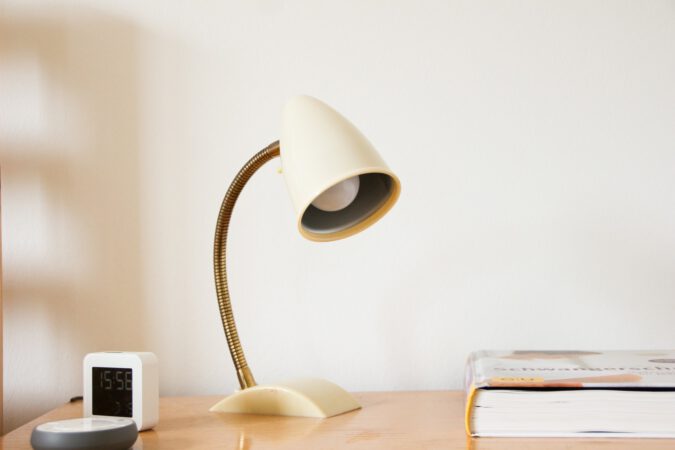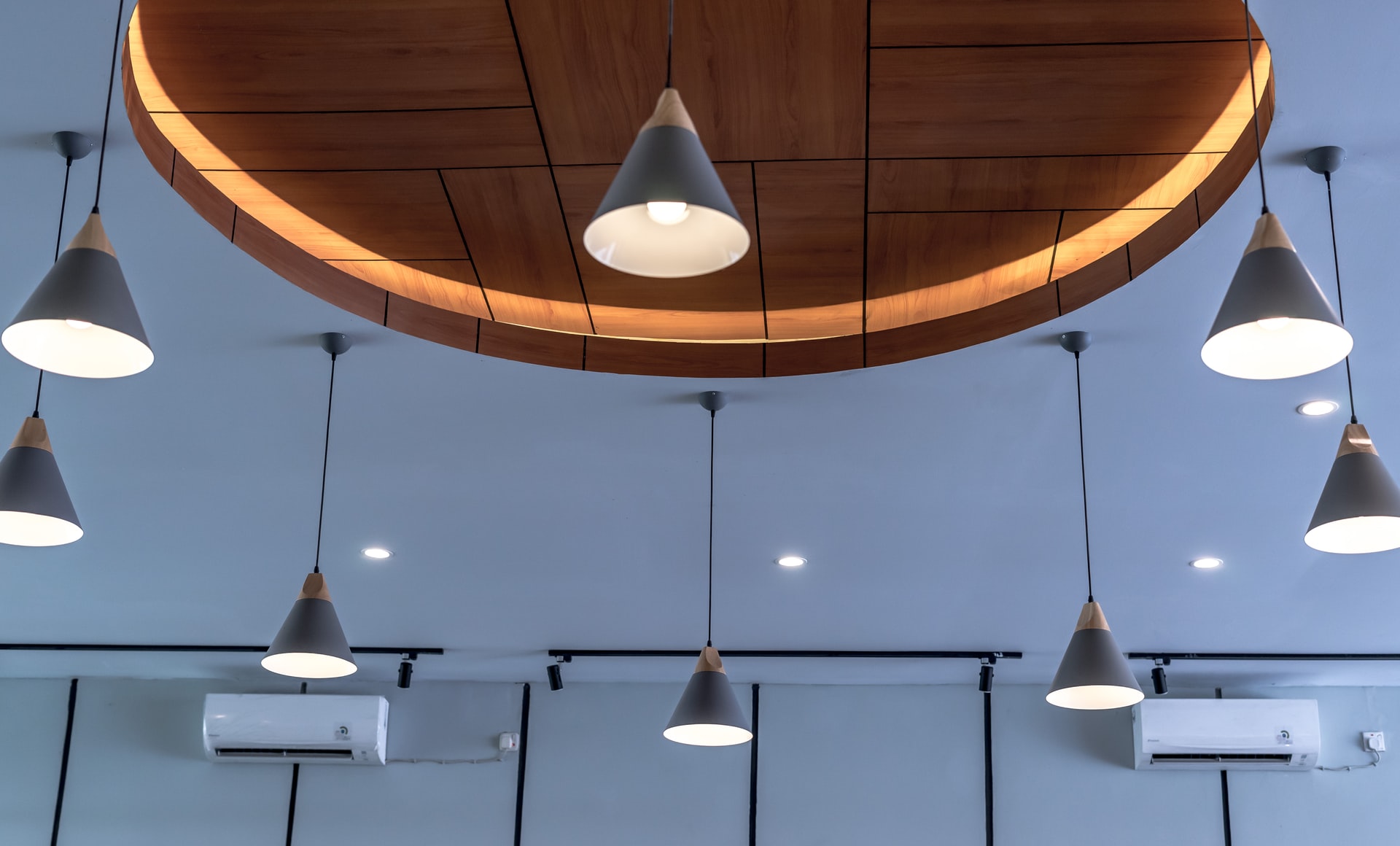Light in the office is a major concern, especially during the dark season. The sun rarely appears, but is buried behind clouds, and there is no genuine brightness to speak of; it is drab and gray all day.
This emphasizes the importance of ergonomic lighting in the workplace in order to guarantee adequate lighting conditions despite the lack of sunlight. Unfortunately, while creating the workplace, this feature is sometimes overlooked because emphasis is focused on the office chair and the desk.
But it’s important to make sure the office lighting is ergonomic because it helps people focus.
The Advantages of Ergonomic Lighting at Work
The benefits of ergonomic lighting in the workplace are frequently understated. One reason for this is that ergonomics is frequently interpreted as merely the correct design of the desk, including the screen and keyboard, or the selection and adjustment of the office chair.
However, ergonomics goes a step further, literally referring to the adaptation of working conditions and the working environment to a person’s demands—which includes the proper illumination.
There are numerous advantages to using ergonomic lighting in the workplace:
Improved Concentration
A lack of light produces fatigue since the body believes it is already getting close to the evening hours and switches to night mode. As a result, it is more difficult to concentrate, makes more errors, and is less attentive and receptive.
Ergonomic lighting in the office can help people focus, making even the hardest tasks easier to do and more likely to be done correctly.
Increased Satisfaction
Who wants to spend eight hours a day sitting in a dimly lit office with no natural light that resembles a cave rather than a workplace? No one, exactly. Workplace design is a crucial role in worker satisfaction, and decent lighting should come as standard.
Increased Output
Ergonomic lighting in the workplace ultimately leads to improved results and increased overall performance. Jobs and projects can be done more quickly and easily when the lighting is good, and when people feel good at work, they are more motivated, which shows in their work.
Improved Health
The body also appreciates ergonomic lighting, especially if it incorporates as much natural light as possible. This is required for the production of vitamin D and also boosts the mood.
It should also be noted that too little light is extremely taxing and might result in burning and irritated eyes. Headaches are a common adverse effect of inadequate lighting.
Cost Savings
Addressing ergonomic lighting in the workplace may also result in cost savings. By minimizing electricity and energy consumption, proper utilization of sunshine and the use of energy efficient lighting can make a significant difference.
Workplace ergonomic lighting cannot be achieved simply by installing a new lamp with a bright bulb. To offer appropriate illumination of a workspace, various distinct components must function together.

We Advise You on What to Look For:
The Maximum Amount of Daylight Possible.
The first item is frequently seen as the most significant, yet it is also the one with the most implementation difficulties. Daylight is an excellent source of natural illumination in the office, and it is also essential for maintaining people’s chronobiology. However, there may be indoor spaces, like businesses, where allowing daylight in is more difficult.
Lighting From Above
Bright overhead lighting is essential in the workplace. It lights up the room well, especially when it is already dark outside or when there isn’t much daylight.
When it comes to ceiling lighting, it is especially crucial that it distributes light evenly and lights the entire office. Most of the time, you need more than one light to do this. If you only use one light, the space may be too big, and the effect of indirect ergonomic lighting would be lost.
Additional Direct Illumination
In addition to the overall brightness of the room provided by the ceiling lamp, direct lighting should be provided to augment the light in order to give specific attention to the area of the workplace. This can be accomplished by mounting extra light sources on the walls.
When it comes to direct lighting, though, location is crucial. It must be carefully monitored to ensure that it does not interfere with work or focus. Everyone knows how annoying it is when direct light hits a display and makes it so that only half of it can be seen.
Lighting for a Desk or Workstation
A traditional desk lamp or another type of workplace lighting completes ergonomic lighting. This gives each worker another chance to brighten certain parts of the screen as needed, like on documents or if the rest of the lighting is still too dim for them.

How Bright Must Ergonomic Lighting in the Office Be?
Just saying that the workplace needs to be bright so that people can do their jobs well and keep their health in mind is true, but it’s not very specific.
Bright is anything but unambiguous, both in terms of real illumination and personal perception.
What one individual perceives as blindingly bright, almost hurting his eyes, may be just right for a coworker. This is yet another reason why it is critical to incorporate an individual component into ergonomic lighting at the workplace in order to meet the demands of all employees.
Furthermore, the brightness of a workplace should be determined mostly by the tasks performed there. The unit lumen is used to specify and measure this illuminance. The greater this parameter, the better the lamp’s lighting and the more brightness that may be made at the workplace.
As a result, while purchasing lamps, it is critical to evaluate how bright a space should be and which lighting are required for this reason.
Color Temperature
The color temperature, which is set in the unit of measurement Kelvin and determines the color of light, is another significant specification. There is a more precise description, in this case, warm white, in addition to the exact specification, for example, 2,700 Kelvin.
As the color temperature rises, so does the hue of the light, so we speak of white or neutral white light at 3300 Kelvin and daylight-like or daylight white light at 5300 Kelvin.
Different light colors can have various effects on employees and their work. Daylight-like lighting, for example, can be energizing and motivating, but it can also be overly bright, blinding, and potentially distracting.
Warm white light, on the other hand, is thought to be comfortable and can aid in relaxation or contentment. However, it is not always appropriate as a work light.
Avoid Common Office Lighting Blunders
It can help to make it clear what should never happen under any circumstances. Changes can then be approached practically. The following are some no-nos that are certain to disrupt the flow of work in offices:
- Faulty or flickering lights are distracting, irritating, and can cause sensory overload. The focus and pace of office work slows down. When it comes to professional lighting, there is no way around replacement.
- Dirt and grime: even at moderate levels of filth, dust reduces brightness and drastically reduces light quality.So, office lamps and light sources that help people work better should be cleaned and taken care of regularly.
- Reflected glare: reflective or shiny surfaces produce unwanted reflections that can be irritating.As a result, light-colored furniture, walls, and floors with no reflective characteristics are preferable.
- Glare: It irritates people when natural light shines directly into their faces through the window.Those who use sunlight should make sure that it comes in from the side. Frontal sunlight is regarded as one of the most common lighting design errors. The absence of sun protection at the office is also problematic, because blinds and shades help manage the amount and intensity of sunlight. Similarly, bulbs or luminaires that are improperly placed or directed can be blinding. Their light distracts the user if it is focused straight at them.

What Is the Difference Between Color Temperature and Light Color?
Our daylight is identical to the visible portion of the sun’s radiation. Light color, commonly known as color temperature, is measured in Kelvin. Light bulb purchasers can read the light color from the packaging:
- Warm white: less than 3,300 Kelvin
- 3,300 to 5,300 Kelvin for neutral white.
- Daylight white: greater than 5,300 Kelvin
Visible light has a frequency range of 780nm to 380nm. Short-wave light at 380nm is perceived as blue-violet, while long-wave light at 780nm is perceived as red.
- 700 nm red
- 590 nm for yellow
- 540 nm for green
- 510 nm for cyan
- 470 nm for blue
The spectrum of morning light contains a significant number of short-wave blue components. It has a bluish tint and is often viewed as cool light. This type of radiation has a stimulating and waking effect on humans.
The higher the proportion of long-wave spectrum hues in a lamp’s light, the warmer it seems. This phenomenon is also visible in sunlight: Evening light contains multiple long-wave components, giving it a reddish, warm hue.
This also commences the human resting phase. As a result, light has a considerable impact on the human biorhythm.


